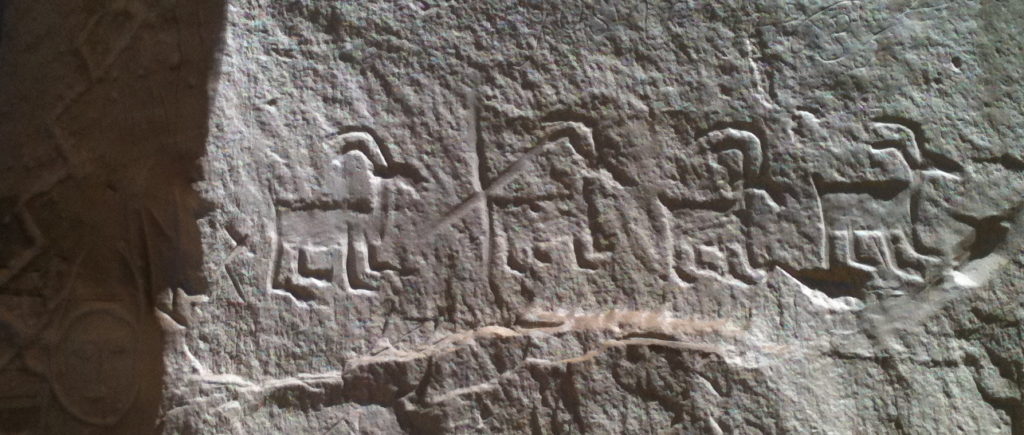Sheep hold a special place in human economies, and they have for a very long time. Sheep tending is compatible with nomadic life or settled life; the Vikings and Spaniards kept sheep with them on sea voyages.

They provide milk, cheese, and wool (when alive) and meat (when killed). Their hides can protect and warm. Musical instruments can be made from horns or bladders. There is no need to grow special food for them, as long as there are pastures for grazing. Their care can be as low tech or as high tech as the flock owner cares to make it.
Given the importance of sheep in the family economy, wool fans may be perplexed to look around the world and find that the cow – not the sheep – is the object of reverence for many cultures. Perhaps a sheep or a small flock can make the difference between poverty and well-being. But once a family has a cow, that indicates a richness beyond simple subsistence. The humble sheep can provide riches in themselves, as Basque second-born sons could tell you. Since second-born sons did not inherit the family sheep business, many Basque later-born men emigrated to the vast grazing lands of Idaho, Nevada, and California in the New World, gaining riches beyond the ordained fate of birth order.
There have been times when sheep were seen as more than a steppingstone to cow ownership. The most important in the Judeo-Christian cosmology is the ram that was sacrificed in place of Isaac, the second son of Abraham’s old age. Rabbis have probably debated the symbolism of the ram for the ages. On the face of it, though, the ram’s high value was as a stand-in for a valuable first-born male, yet its humility is legendary in its role as a sacrifice. Thus, the lamb stands in for the most beloved and valued child, Jesus, who is referred to as the Lamb of God. In Greek mythology, Zeus took on the form of a ram at times to seduce maidens who caught his eye; of course, he also took many other forms, so the ram may not be significant. This links up to the Golden Fleece, which was, in myth, the fleece of an offspring of one of Zeus’ trysts. Jason’s deliverance of the Golden Fleece to Thessaly signals his hour to become king of that country.
We see the economic value of sheep in European culture in the symbols used by the Florence, Italy Chamber of Commerce and by Brooks Brothers – the American company founded in 1818, whose logo is a plump sheep caught up in a ribbon to echo the symbol of British wool dealers. It is a reminder of the sign of the influential Knights of the Golden Fleece.
Less favorable qualities of sheep are documented in song and story – sheep who lose their way, sheep who are passive animals (or mindless and easy to herd, etc.. Silliness is demonstrated if a person makes sheep’s eyes at another person as a way of flirting.
Some say that woolen clothing made it possible for people to explore and settle areas of the world that would otherwise be inhospitable. On the other hand, it is easy to point to cultures that live in cold places and who have not relied primarily on wool but, instead, make wind-stopping, water-proof animal skin clothing with the fur turned to the inside. Altogether in human existence, for a wide range of people all over the world, people traveling with the seasons and harvesting the best of each eco-climate could bring along their sheep for milk, for cheese, and for light-weight clothing that they could make and repair themselves, while keeping their animals alive to breed and to eventually provide mutton, chops, cold-weather clothing and, in some part of the world, musical instruments.
In some cultures, the balance tipped from sheep wandering along the roadside grasslands with their herders to the herders themselves changing their ways of life to accommodate what was best for their sheep. There is a word for the seasonal trek that is still made today in many parts of the world – transhumance, the crossing of the earth. These are the migrations in which people herd their flocks up to high meadows in summer and to lower pastures in the colder months. Sometimes a whole cultural group will move along with the flocks. In other cultures, only the shepherds move, while the rest of the group stays behind to farm or fish. In these cultures, great festivals are held when the sheep and shepherds return.

Along the Wool Roads, from the of steppes of Mongolia and the mountainsides of Kashmir, to the hills of Scotland and on to the plains of the New World, humans have built cultural practices around these migrations – creating songs, stories, festivals, celebrations, even dating rituals. We have created seasonal fairs for trade, developed craft guilds to protect professional knitters, created hundreds of recipes for mutton, and organized entire ways of life around the breeding, herding, spinning, dying and weaving practices – such as in traditional ways of the Navajo people.
Seasonal Wool Roads have led through Sub-Saharan Africa in the flood plain of the Niger River in Mali, high in the Atlas Mountains of Morocco and Algeria, and through Spain, France, and Italy. We may express our wooly ideas in different ways and in difference languages, but sheep culture has been a strong force the world over, creating a path for us to follow. Even those of us who live in cities, and whose days are measured by calendars rather than sunrises can work with wool and, in doing so, we take our place alongside those who trek to the season’s best grazing grounds.
It is my intention that these chapters describe and celebrate the contributions of a variety of wool and knitting cultures. My hope is to bring awareness and respect to the cultural heritage of different peoples – not to appropriate their work, but to appreciate and honor these traditions. May these chapters ring true.
